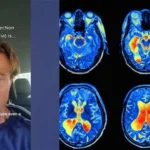What Are the First Signs of Old Age? Unveiling the Secrets of Aging and How to Embrace the Golden Years:Are you starting to notice a few gray hairs or wrinkles creeping in? Don’t panic! It’s just the silver herald of age, signaling that you’re entering a new phase of life. In this blog post, we’ll explore the first signs of old age and delve into the physical and perceptual changes that come with it. From the skin’s testimony of time through wrinkles and age spots to the shrinking stature and the changing landscape of our bodies, we’ll cover it all. But don’t worry, we’ll also discuss how lifestyle and health play a role in feeling old beyond age and recognizing premature aging. Plus, we’ll provide some helpful tips for navigating post-70 life and avoiding the fastest aging body parts. So, grab a cup of tea, sit back, and let’s embrace the golden years together!
Understanding the First Signs of Aging
As we journey through life, our bodies inevitably begin to show signs of the passage of time. Recognizing these signs can help us understand our bodies better and take proactive steps to maintain our health and well-being. Here, we delve into the first indicators of aging, what they mean, and how they can manifest in our daily lives.
Gray Hair: The Silver Herald of Age
One of the most visible signs of aging is the appearance of gray hair. Melanocytes, the cells responsible for hair pigmentation, decrease in number as we age, leading to the gradual loss of color. While some embrace the transition as a sign of distinguished maturity, others seek to cover up these silvery strands. Genetics play a significant role in when this change occurs, but stress and lifestyle can also have an influence.
Wrinkles and Age Spots: The Skin’s Testimony of Time
Our skin tells a story, and as we age, wrinkles and age spots become part of that narrative. Collagen and elastin, the skin’s support structures, break down over time, leading to the formation of wrinkles. Simultaneously, prolonged exposure to the sun can cause age spots, which are small, darkened patches of skin. These changes can be embraced as badges of a life well-lived or can be minimized through skincare routines and healthy living habits.
Shrinkage in Stature: The Tale of Spinal Discs
As we age, the spinal discs that act as cushions between our vertebrae lose elasticity and hydration, causing shrinkage in our overall height. This natural process can be exacerbated by poor posture and lack of exercise. Engaging in activities that strengthen the back and core, as well as maintaining proper posture, can help mitigate some of these effects.
Feeling Old: The Age of Perception
Perception is reality for many, and for Americans, the feeling of being old begins, on average, at 52 years old. This perception can be influenced by the physical signs of aging, but also by societal expectations and personal experiences. Attitude towards aging can have a profound impact on quality of life and self-perception.
Physical Symptoms: The Body’s Changing Landscape
The structures of our bodies change as we age. Bones weaken and shrink, becoming more prone to fractures. Muscles lose strength, endurance, and flexibility, affecting our coordination, stability, and balance. These changes underscore the importance of maintaining a healthy lifestyle, including diet, exercise, and regular check-ups to preserve as much function as possible.
The Five Stages of Aging
Self-Sufficiency: The Dawn of Aging
Self-sufficiency is the first stage of aging, where individuals can maintain their lifestyle independently. This stage is characterized by an active engagement with life and a focus on wellness and preventive care to maintain autonomy.
Interdependence: The Call for a Helping Hand
As we progress in age, we may find ourselves in the stage of interdependence. Here, some support and assistance become necessary, though a large degree of independence remains. Family, friends, and community services play a crucial role in providing the needed support.
Dependence: Embracing Assistance
In the dependency stage, individuals require more significant help with their daily needs. This could mean moving to assisted living facilities or having in-home care. It’s essential to plan for this possibility and to foster an environment of respect and dignity for those in this stage.
Crisis Management: Preparing for the Unexpected
Aging can bring unexpected health crises, and being prepared is crucial. This involves having health directives in place and ensuring that loved ones are aware of your wishes. Effective crisis management can alleviate some of the stress during these challenging times.
End of Life: The Final Chapter
The final stage of aging often requires intensive care and support, as individuals may experience a significant decline in health. It’s a time for reflection, connection, and ensuring comfort. It’s also a time when tough decisions and conversations about end-of-life care are necessary.
Feeling Old Beyond Age: The Role of Lifestyle and Health
Feeling old and tired can be a result of factors beyond the number of candles on your birthday cake. Medications, infections, arthritis, an underactive thyroid, poor nutrition, and alcohol use can all contribute to a sense of fatigue and aging. Being mindful of these factors and addressing them with the help of healthcare professionals can make a significant difference in how old we feel.
Recognizing Premature Aging
Premature aging is when the body shows signs of getting older sooner than expected. If you notice skin changes such as increased wrinkles, age spots, and a loss of skin tone, especially around the chest, it could indicate that your body is aging faster than it should. Lifestyle changes and medical consultations might be necessary to slow down the process and improve overall health.
Navigating Post-70 Life: Things to Avoid
After the age of 70, some lifestyle choices become more critical than ever. One such choice is avoiding increased isolation, which has been identified as a significant risk factor for both physical and mental health decline. Staying socially engaged and connected is vital for maintaining a sense of purpose and well-being.
The Fastest Aging Body Parts: The Neck and Chest
The skin on your neck and chest is among the first to betray signs of aging due to its delicacy. Fine lines and wrinkles can develop in these areas, often more quickly than on other parts of the body. Protecting these areas with sunscreen, along with proper skincare, can help slow down the signs of aging.
Conclusion: Embracing the Golden Years
While the signs of aging are inevitable, how we respond to them can shape our experience of growing older. By understanding the first signs of old age, we can take steps to care for our bodies and minds, allowing us to embrace the golden years with grace and vitality. Remember, aging is not just about the number of years we’ve lived but the life in those years that truly matters.
FAQ & Common Questions about Signs of Old Age
Q: How do you know if you look older than your age?
A: Premature aging is when the typical effects of growing older happen early, making your body look older than your actual age. Common signs of premature aging include wrinkles, age spots, dryness, loss of skin tone, hyperpigmentation around your chest, and sagging.
Q: What are the three things a person should avoid once they are past 70 years old?
A: Three things to avoid once you are past 70 years old are increased isolation, as it can be a major killer, along with other non-life enhancing habits.
Q: What are the five signs of deterioration in patients?
A: The early signs of deterioration in patients include changes in respiratory rate, oxygen saturation, blood pressure, heart rate, temperature, and conscious/mental status, which may go unrecognized.
Q: Do elderly people sleep a lot?
A: Compared with younger adults, the elderly spend more time in bed but experience deterioration in both the quality and quantity of sleep.
Q: How can you tell if an elderly person is deteriorating?
A: Signs of deteriorating health in aging adults can include cognitive decline, such as memory loss, confusion, difficulty with problem-solving, and changes in mood or behavior. Look out for these signs to identify if an elderly person is deteriorating.





